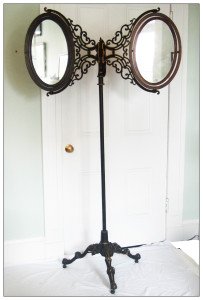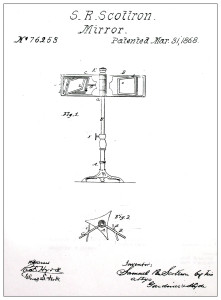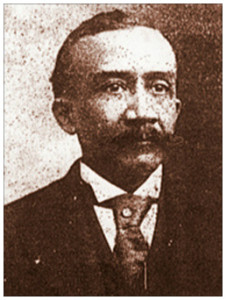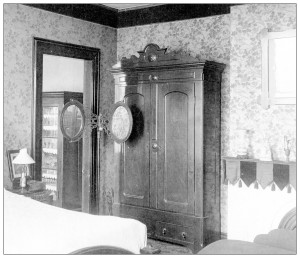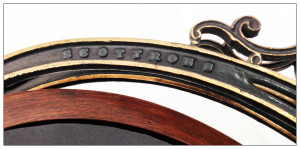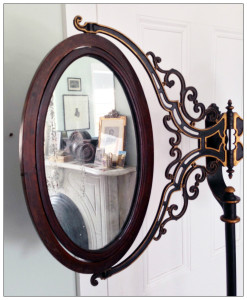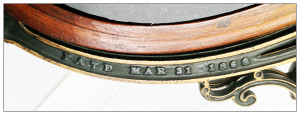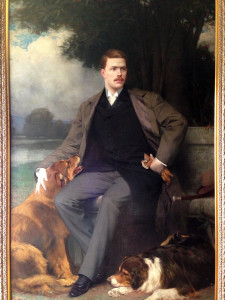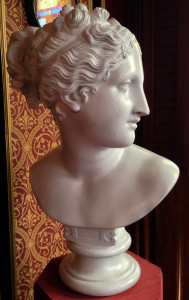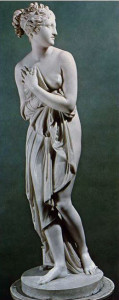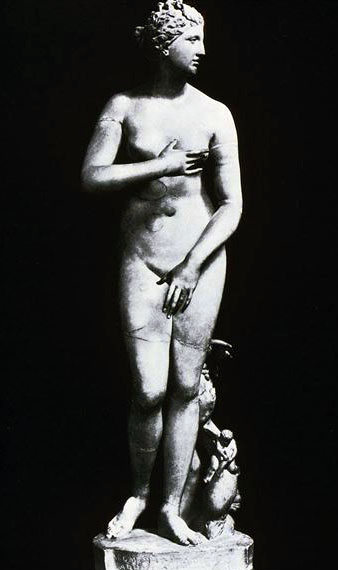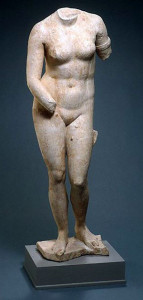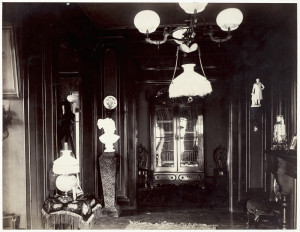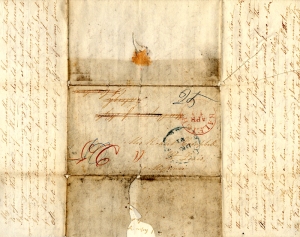Part of what makes a visit to the Campbell House Museum such an experience is the enormous number of original pieces of furniture and knick-knackery that fill the halls of the 160-year-old home. From tables and chairs to armoires and a piano, the house has quite the collection of Victoriana. But occasionally, much like the house itself, these items need a little elbow grease and T.L.C. to keep them in tip-top shape. A perfect example of this is the adjustable double mirror that can be found in a corner of the Campbell House library (see the bottom of the page for some up close and personal snapshots of some of the mirror’s detail).
The mirror’s design was patented in 1868 by Samuel Scottron. Scottron was a prominent African American inventor from Brooklyn, New York who began his career as a barber and would eventually be granted four U.S. patents. This particular piece is unique because Scottron designed it so that users could “see themselves as others see them.” In other words, the mirror could be adjusted so your reflection was reflected, reversing the mirrored image. (Try and say that three times fast.)
In the model the Campbell’s owned, a pair of fancy cast iron arms and a high stand support a pair of walnut oval-shaped mirror frames that swivel in all directions. (As a side note, if you can believe it, the mirror was purchased for the museum at the 1941 Campbell estate auction for $5.50!)
However, a few years ago, as the museum’s restoration drew to a close, the mirror was in pretty rough shape. In the 1960s, one of the wood frames and mirrors had gone missing, making the impressive double mirror pretty well useless in terms of its originally intended method of use.
Luckily, museum member and master carpenter Don Dill worked long and hard to complete restoration work on the mirror, replacing the missing piece and restoring it to its original condition. The mirror is still in the same room in which it has sat since the last half of the 19th century. (see some detail photos of the mirror at the bottom of this post)
Don’s work goes hand in hand with the Museum’s efforts to conserve and restore its collection of original objects and artifacts, seen most recently in the hanging of lavish new draperies in the parlor several weeks ago.
Click here to read more about the parlor draperies project,recently featured in Ladue News’ Elegant Living publication.

